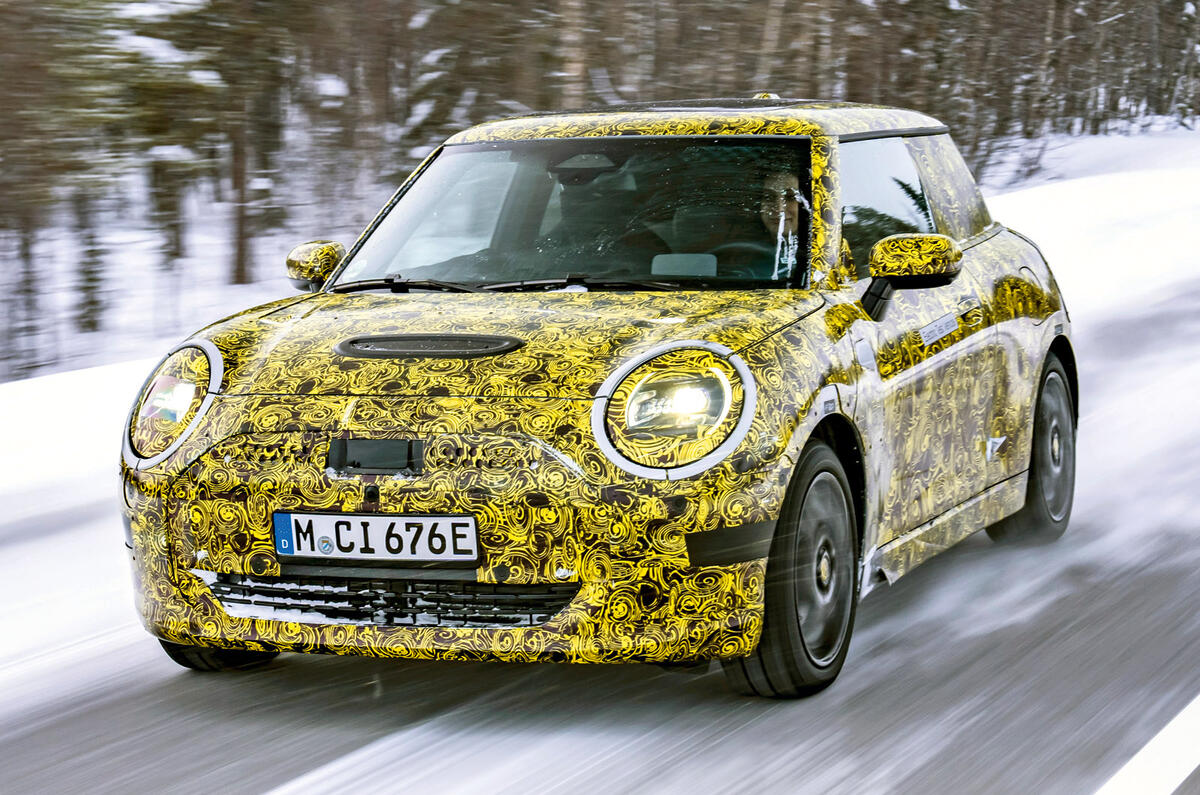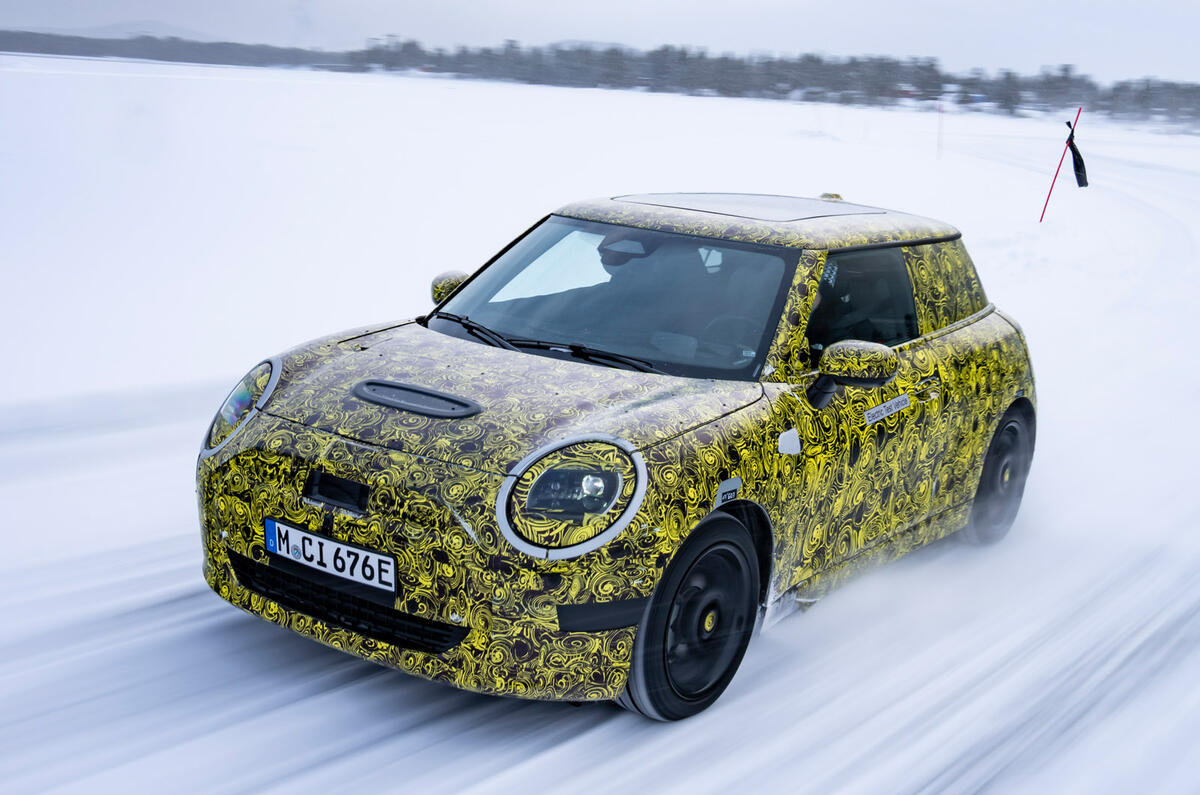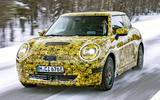Manufacturers are often quite happy to let journalists look around or even drive late-stage prototypes as they ramp up the marketing machine ahead of a car’s launch. It is not often, however, that we get anywhere close to a prototype a full 18 months before the new Mini is due on sale.
Of course, the Mini Mini Electric hatchback prototype that we rode in was still wrapped in camouflage and the interior style was very much bin-bag chic, but it still gave us plenty of clues to the final production design and make-up.
Design-wise, it’s clear that the images that leaked late last year of an uncamouflaged car are representative of what we will see in Europe. Just ignore the big rings around the headlights and the square tail-lights: they’re decoys.
The wider track, slightly shorter front overhang, larger wheels and longer wheelbase also give this Mini a more purposeful stance.

Inside, we got a peek behind the camouflage and saw that the new Mini takes inspiration from the Strip concept, with a much more minimalist design ethos. The aim is to reduce the design to what matters and rely less on chrome and stylistic flourishes.
The centre console is dominated by a giant round touchscreen – in place of Mini’s traditional centre-mounted speedo – that controls almost all the climate functions as well as the infotainment system. It also takes over the function of the gauge cluster, which disappears in favour of a head-up display.
Underneath the screen, there’s a small cluster of physical controls, including a toggle for the drive selection and an ‘ignition key’ to turn the car on and off.

























Join the debate
Add your comment
Oh, dear, I was hoping they'll give up on that big, round nonsense.